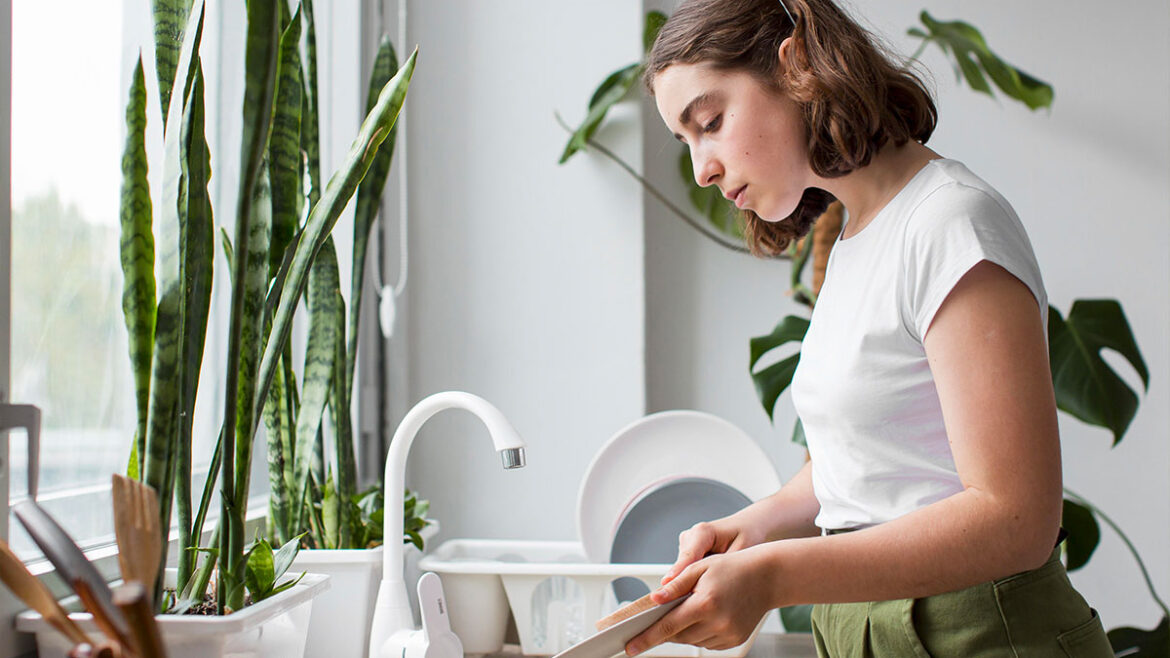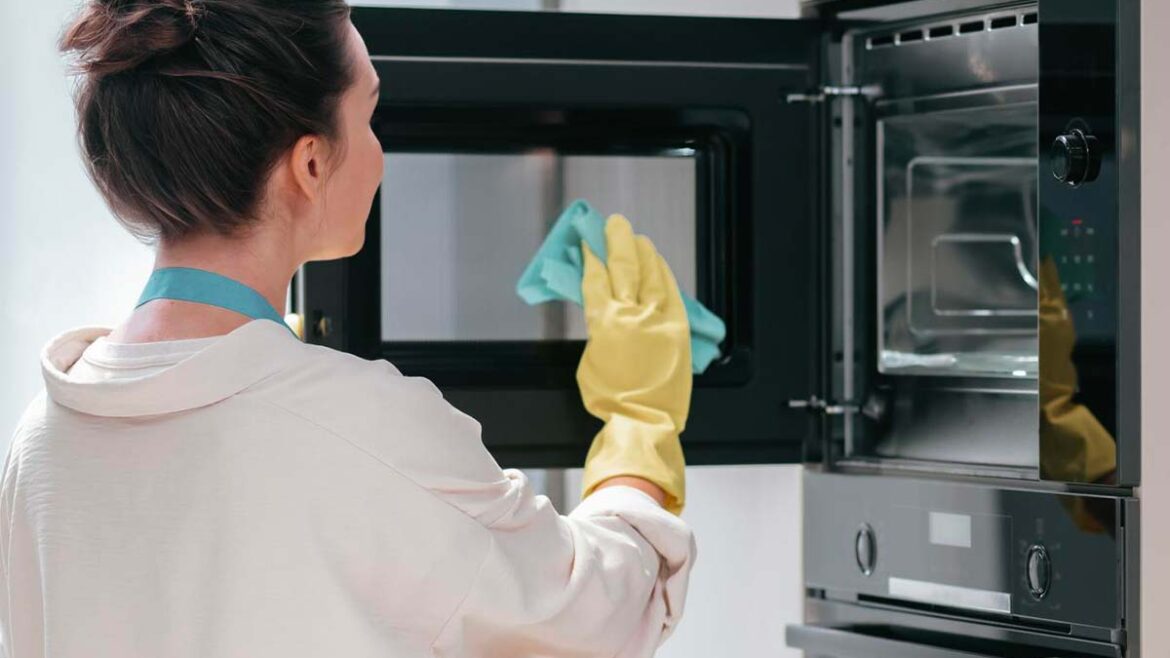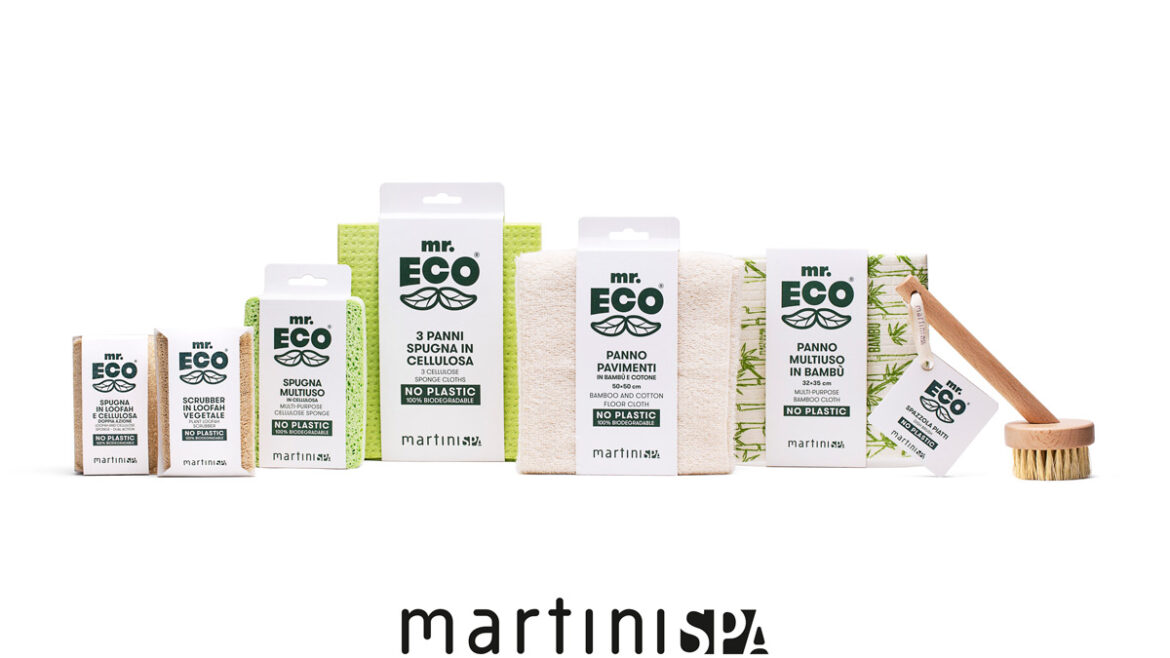Washing dishes may seem like a simple task, but choosing the right sponge can make a big difference. Not all dish sponges are created equal, and some are much more effective and long-lasting than others. Here are some tips on how to choose the most effective and long-lasting dish sponges, along with an overview of our product lines.
Dish sponges: characteristics to consider
When you choose one dish sponge, it is important to consider some key characteristics:
- Materials: sponges can be made of different materials such as polyurethane foam, cellulose, natural fibers and recycled materials. Cellulose sponges, for example, are very absorbent and soft, ideal for delicate dishes, while those made of polyurethane foam are more durable and resistant.
- Structure: the structure of the sponge affects its cleaning effectiveness. The sponges with one rough surface are excellent for removing stubborn dirt, while those with a smooth surface are perfect for delicate cleaning of plates, glasses and non-stick pans.
- Antibacterial properties: sponges treated with antibacterial agents help keep the kitchen hygienic by preventing the proliferation of germs and bacteria.
- Eco-sustainability: Sponges made from recycled and biodegradable materials are an excellent choice for those who want to reduce the environmental impact of their cleaning activities.
Martini SPA dish sponges
At Martini SPA, we offer three lines of dish sponges, each designed to meet specific needs::
1) Mr.Eco ecological line
The new Mr.Eco collection is made with recycled and biodegradable materials. Its sponges do not contain plastic and are perfect for those looking for eco-sustainable solutions without compromising the effectiveness of cleaning. Using natural fibers such as Sisal e Loofah, beyond recycled materials, these sponges offer effective and environmentally friendly cleaning.
2) Hygiene+ antibacterial line
The sponges from our Hygiene+ line are treated with antibacterial agents to prevent the proliferation of germs and bacteria. They are ideal for daily use, ensuring deep and hygienic cleaning without the need to disinfect frequently. The antimicrobial action of ingredients such as silver, copper, thiabendazole and zinc pyrithione ions helps keep your kitchen safer and more hygienic.
3) High resistance Utility line
The Utility line sponges are designed to last longer, resisting tears and wear even with intensive use. They are perfect for more demanding cleaning and for removing stubborn dirt, such as encrusted pans and surfaces that are difficult to clean.
How to choose the right sponge
Choosing the right sponge depends on your specific cleaning needs:
For daily use
If you’re looking for a sponge for the daily washing of dishes, antibacterial sponges are an excellent choice. They maintain their effectiveness over time and help keep the kitchen hygienic.
For intensive cleaning
For more difficult cleaning, such as encrusted pans and resistant surfaces, the sponges from the Utility line are ideal. Their superior durability will allow you to tackle even the most demanding cleaning challenges without having to replace them frequently.
For an eco-friendly approach
If sustainability is a priority, the sponges of Mr.Eco line offer an effective solution without compromising the environment. They are ideal for those who want to reduce the environmental impact of their cleaning activities.
Sponge maintenance
To ensure that the sponges last as long as possible, it is important to maintain them correctly:
- Rinse well: after each use, rinse the sponge well to remove food and detergent residues. This helps prevent the formation of bad odors and the proliferation of bacteria.
- Disinfection: regularly disinfect the sponge by immersing it in a solution of water and vinegar or placing it in the microwave for a few seconds (make sure the sponge is damp to avoid fires). This process helps keep the sponge hygienic and extend its useful life.
- Regular replacement: even the best sponges have a limited life. Replacing them regularly helps maintain a high level of hygiene in the kitchen. We recommend changing sponges every two weeks or when they start to show signs of wear.
Advantages of quality sponges
Investing in high-quality sponges offers numerous benefits:
- Cleaning effectiveness: quality sponges remove dirt better and food residues, ensuring deep and thorough cleaning.
- Superior durability: durable sponges last longer, reducing the need to replace them frequently and offering an economic saving in the long run.
- Improved hygiene: antibacterial sponges help keep the kitchen hygienic, preventing the proliferation of germs and bacteria.
- Sustainability: eco-friendly sponges made from recycled and biodegradable materials are an excellent choice for those who want to reduce the environmental impact of cleaning activities.
Conclusion
Choosing the right dish sponge can significantly improve the effectiveness of daily cleaning and prolong the life of dishes. At Martini SPA, we are committed to providing dish sponges that combine innovation, durability and sustainability, meeting the needs of every type of kitchen. Investing in quality products will not only help you keep your kitchen clean, but also contribute to a more sustainable approach to cleaning.
We invite you to explore our sponge lines to find the one that best suits your needs. Our solutions are designed to offer maximum quality and performance, simplifying daily tasks and help you maintain an impeccable kitchen.
For more details on our products, you can visit our dedicated pages on Amazon


